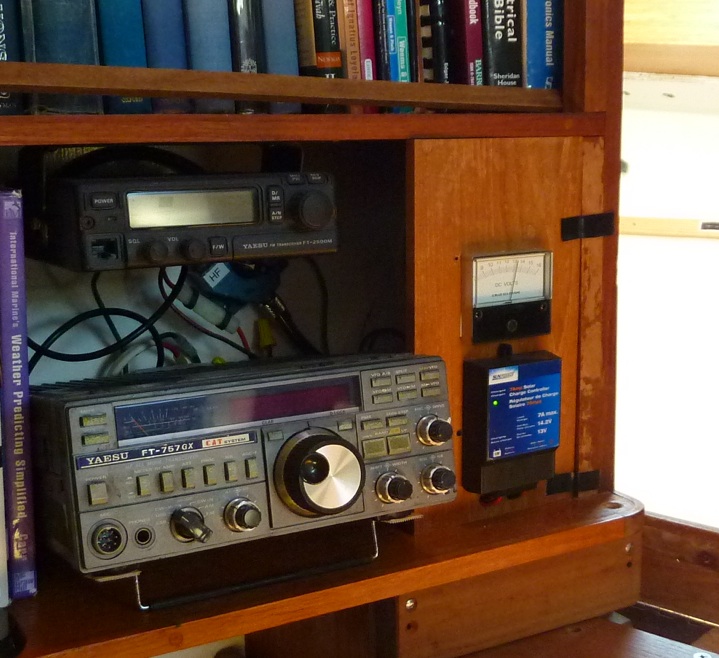
I use my HAM radio for acquiring the signal, which has all sorts of filtering to eliminate noise and get a better picture. But the Grundig would be a good backup if teh band conditions are good—this year they are terrible.
NWS sends these charts out all day long, with a total of some 50 charts daily. Each chart has a specific broadcast time. They are sent out from two base stations, one in Boston which covers the Atlantic weather, and one in New Orleans which covers the tropics also. They are sent on several frequencies so that yachts near and far can receive the charts.
The list of times and frequencies can be downloaded from the NWS in the radio weatherfax section of their web site.
It takes usually four hours of listening to get the charts useful to you. I haven’t been able to automatically download he charts, so every 15 minutes I have to go to the computer to initiate a new capture. In order to get the prettiest charts, you have to listen to the sound, and tweak the tuning knob very slightly, then watch the clarity of the chart as it begins downloading. Use headphones if the off watch is resting. Otherwise I rather like the chirp chirp sound as the image downloads and I can hear the end and warm up signal for the next chart, which warns me to save the image to disc, and clear the screen.
Don’t expect good noise free charts while you are in a Marina. The other boats generate RF noise which is picked up by your ground system and fed into the radio. See interference pages. To get weather charts you only need a $250 receiver (Grundig Satellite 750) and a $350 iPad running HF-Weather Fax (App Store.) On the iPad connect the headphone-out on the radio to the headphone jack on the iPad using an iRig cable adapter (Amazon) which connects the iPad mic to the radio output. Or you can just put a headphone from the radio over the iPad mic. Download 20 NOAA weather charts a day for free, direct from the radio broadcasts. You can stay four days ahead of weather.









